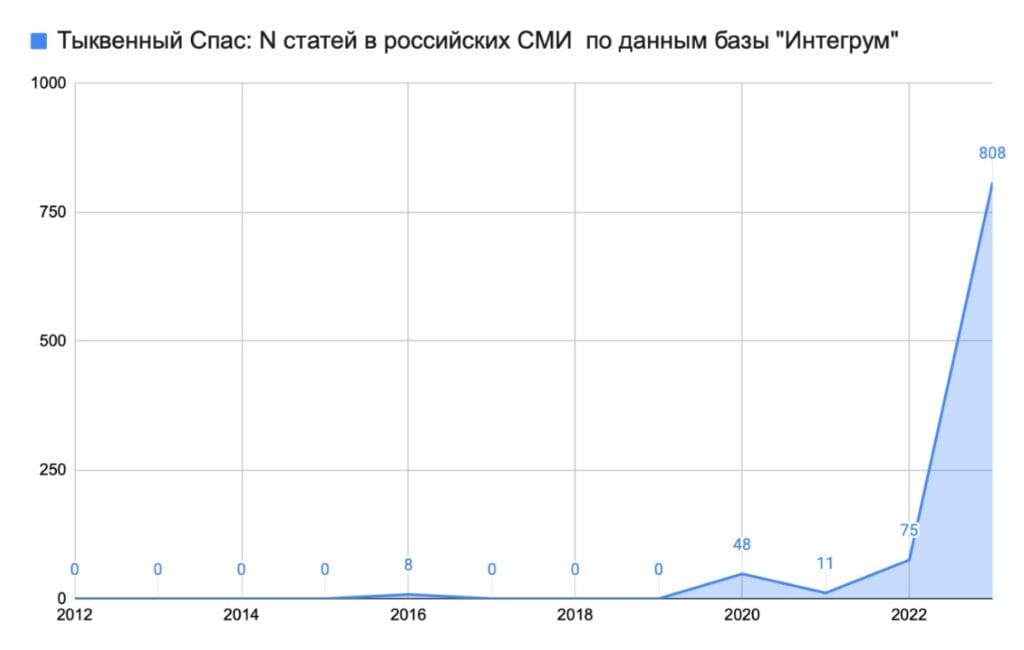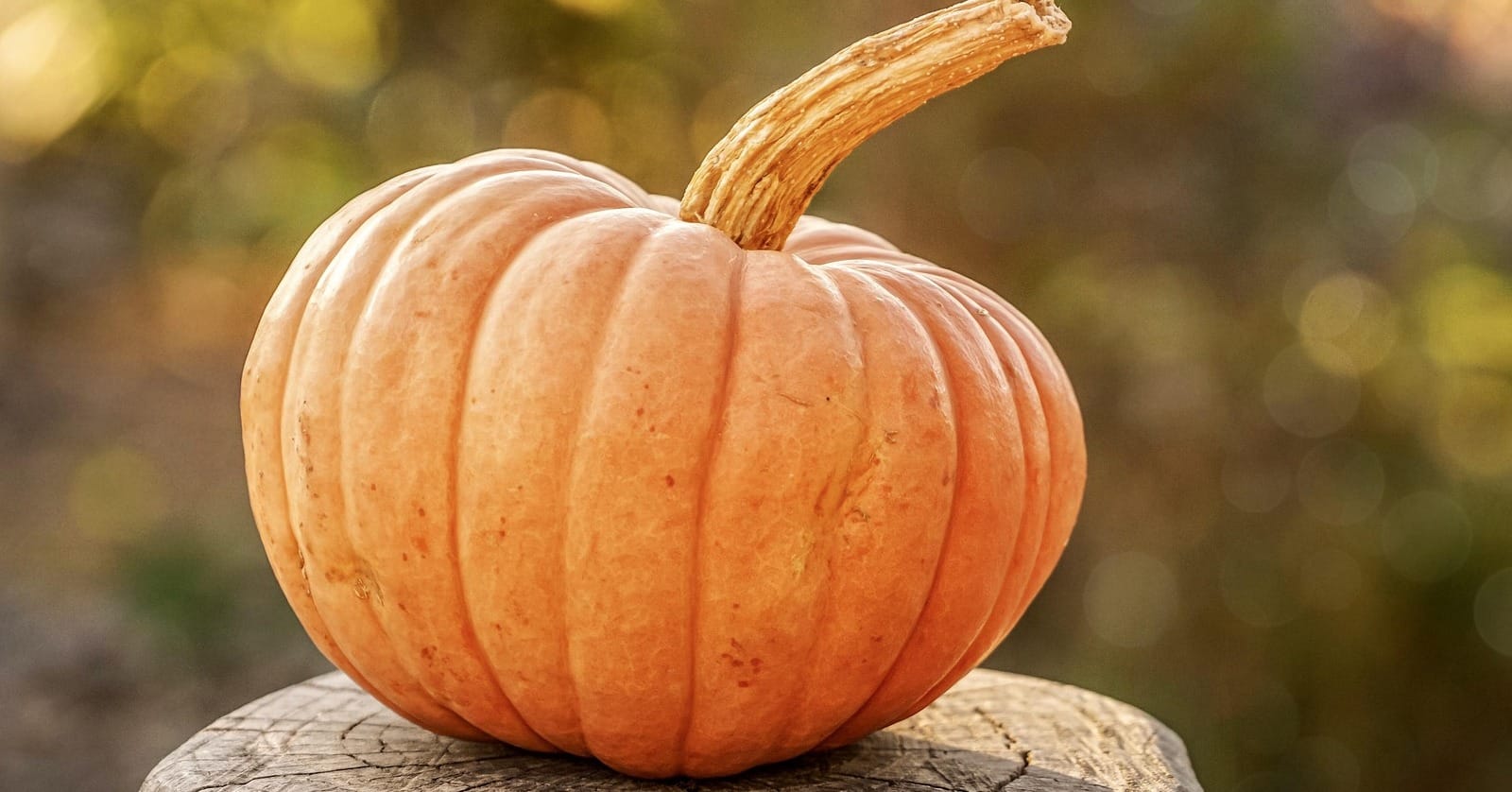In October 2023, Russian media wrote about the upcoming ancient holiday, which is celebrated at the end of the month and which can be made into a Russian alternative to Halloween. We have verified the correctness of such statements.
In the middle of the month, Tatarstan republican publications (State Television and Radio Broadcasting Company "Tatarstan", "Tatar-Inform", "New Kama"and others) invited residents and guests of the republic to attend the Pumpkin Spas festival in the Yelabuga region, scheduled for October 28. The event program included an exhibition of arts and crafts, a concert of creative groups, folk games and round dances, as well as creative and culinary competitions. “Pumpkin Spas is a Slavic holiday that honors the pumpkin as a symbol of harvest, fertility, health and longevity,” stated the authors of notes in regional media. Although the festival near Yelabuga took place on the last weekend before Halloween, this holiday was not directly mentioned in publications.
People started talking about Pumpkin Spas as an alternative to Halloween soon after on October 20, on the page of Izhevsk school No. 16 on VKontakte. published announcement of the Pumpkin Spas theme day. “It’s Halloween for some, but for us it’s Pumpkin Spas!” - this is how this post began. The picture attached to it said: “Pumpkin Spas is a Slavic holiday, which is celebrated in Russia on October 31st. On this day, pumpkin is revered as a symbol of harvest, fertility, health and longevity.” Dozens of media outlets wrote about the initiative of teachers from Udmurtia, while the authors of many notes directly quoted the biography of the holiday given in the announcement (among them, for example, the state RIA Novosti). The “ancient holiday” was also celebrated in other regions, for example in Tyumen region.
To check when this mysterious holiday appeared, you can use the Integrum database, which contains articles from almost all Russian media over the past 30 years. From this database it is clear that the phrase “Pumpkin Spas” itself, starting from 2016, is often found in Russian media as a common joke (like “In our country, instead of Halloween, we have Pumpkin Spas”).

An interesting revolution is taking place in 2022. It all starts relatively innocently: publications appear in newspapers (mostly regional ones) about how here and there people are trying to celebrate Pumpkin Spas. Thus, the news sheet of the Russian Christian State Academy reportsthat, on the initiative of students, the institution will celebrate the harvest festival - Pumpkin Spas. Kaluga regional branch of the Women's Union of Russia arranged “Russian holiday Pumpkin Spas” with games, ditties and folk songs. Ksenia Mikhailova, correspondent for Volzhskaya Gazeta, in a small note argues that Pumpkin Spas is gradually acquiring “folk status in response to Western traditions that are trying to penetrate our lives.” “Unlike the gloomy Halloween, where the main attributes are blood, ghouls, evil spirits, Pumpkin Spas is a good, bright, positive day and, most importantly, close to our spirit and culture,” writes the author.
Farthest in creating a biography of a new old holiday it's gone NIA "Krasnoyarsk". The note about how Pumpkin Spas is becoming an alternative to foreign Halloween states: “A huge pumpkin fruit was brought to St. Vladimir Yasno Solnyshko by Byzantine monks. Since then, pumpkins began to be grown in Rus'.” The author probably forgot that pumpkin brought from the New World to Europe only in the 16th century, and Vladimir Yasno Solnyshko is a distorted name of Vladimir Krasno Solnyshko, epic character, who inspired the heroes to fight their enemies and has a very indirect relationship with the prince Vladimir the Great, who died in 1015.
In 2023, the number of articles on this topic, as evidenced by the Integrum database, increased more than tenfold: 808 publications as of October 30 versus 75 notes a year earlier. Both federal and major regional publications are already writing seriously about the celebration of the “ancient harvest festival”. The reason for the appearance of at least some of these publications was the news about the celebration of the Pumpkin Savior in an Izhevsk school.
At the same time, representatives of the Russian Orthodox Church deny the existence of such a holiday in the church calendar and speak rather harshly about the events dedicated to it. “The appearance of the so-called Pumpkin Spa is an attempt to combine incompatible things. On the one hand, many people understand that Halloween is bad, and thank God that they understand it... And it’s good that people don’t perceive Halloween as something nice and good, but at the same time, the bad thing is that they are trying to create some kind of replacement, which turned out to be just as bad,” said the head of the missionary department Kazan diocese Alexander Ermolin. In turn, the head of the press service of the Kuzbass diocese Vyacheslav Lansky said, that there is nothing in common between traditional Spas (Honey, Apple, Bread) and Pumpkin. The clergy also considered blasphemous the thoughtless use of the word “saved,” which “is etymologically close to one of the names of Jesus Christ, the Savior.”
Let's assume that the Slavs actually had a harvest festival associated with pumpkin, which was simply ignored by the church. To test this hypothesis, let us turn to the research of ethnographers (study folk cultures) and folklorists (study oral folk texts).
The best-known and most authoritative reference publication for checking these types of questions is the five-volume encyclopedia “Slavic antiquities"edited by academician Nikita Tolstoy, in the creation of which experts in the history and folk culture of the Eastern, Western and Southern Slavs from the Institute of Slavic Studies of the Russian Academy of Sciences took part. This work does not mention either the Pumpkin Spas or, in principle, special ritual manipulations with pumpkins (it took root on the territory of the Russian Empire much later than in Europe). Moreover, there is no information in Slavic Antiquities about a single Russian or Slavic harvest festival, which would fall at the end of October - beginning of November.
The life of farmers, including the Slavs, was strictly connected, firstly, with the natural cycle, and secondly, with the stages of harvesting. Therefore, in the folk calendar there were a lot of holidays that were associated with the receipt of one or another product. For example, Apple Spas is just such a holiday; it is tied to the approximate time when apples can and should be picked.
But since the traditional economic activity of the Slavs is farming, the main rituals, including holidays, were centered around the time of the grain harvest. Not all of these rituals were tied to specific dates; the time they took place varied slightly. In the south of Russia and Ukraine often noted zazhinki - the first day of harvest, which fell on Peter's Day (July 12). An older, respected woman cut the first ear, and bread and salt were placed on the field (this is an example of a magical gift exchange with the forces of nature). About a month later (in the middle and end of August; the real Spas was celebrated then), the harvest came to an end, and then harvesting parties were held. Wreaths and “beards” were woven from the last spikelets, and they were solemnly carried into the house, where a cheerful feast was held.
In other words, if it occurred to someone to celebrate the ancient Slavic harvest festival, then it would be logical to do it in August - and for a long time to think about which holiday to choose from the complex agricultural cycle. In October, the Slavs performed completely different rituals.
For the folk culture of the Slavs, some of the most important rituals are those associated with the veneration of ancestors. You must constantly maintain contact with your ancestors, because the well-being of the family and the harvest depend on them. In the folk calendar of Belarusians and Ukrainians there were special memorial days on which it was necessary to treat dead ancestors (they were called “grandfathers” or “dzyads”). It was believed that ancestors came on this day to visit their relatives; they wanted to wash and eat. Therefore, it was necessary not only to prepare ritual food and call the dead to the table, but also to offer them to wash themselves: basins were placed in the bathhouse, new brooms were placed and no one approached it throughout the evening.
One of these memorial evenings took place on Demetrius' Day, October 26, or on the Saturday preceding it. On this day, the deceased ancestors symbolically found themselves at the same table with those living. Surprisingly, it is precisely this fact that brings Dmitrov Saturday closer to Halloween, which also grew out of the Celtic cult of remembering the dead.
Thus, Pumpkin Spas is a fictitious holiday that has nothing to do with the ancient Slavic rituals that are dedicated to the harvest (they took place at the turn of July-August, but not October-November). It is also absent from the Orthodox church calendar. The first, and humorous, mentions of Pumpkin Spas came in the mid-2010s, but very quickly a biography was invented for him, which made it possible to use the non-existent holiday to “import substitution” of Halloween.
Cover photo: Pixabay
- T. Agapkina. Mythopoetic foundations of the folk Slavic calendar
- A. Arkhipova. Pumpkin Spas, or the Ban on Halloween: how holidays are invented and banned
- Is it true that the Day of the Dead Parade in Mexico originated from the James Bond film?
If you find a spelling or grammatical error, please let us know by highlighting the error text and clicking Ctrl+Enter.






